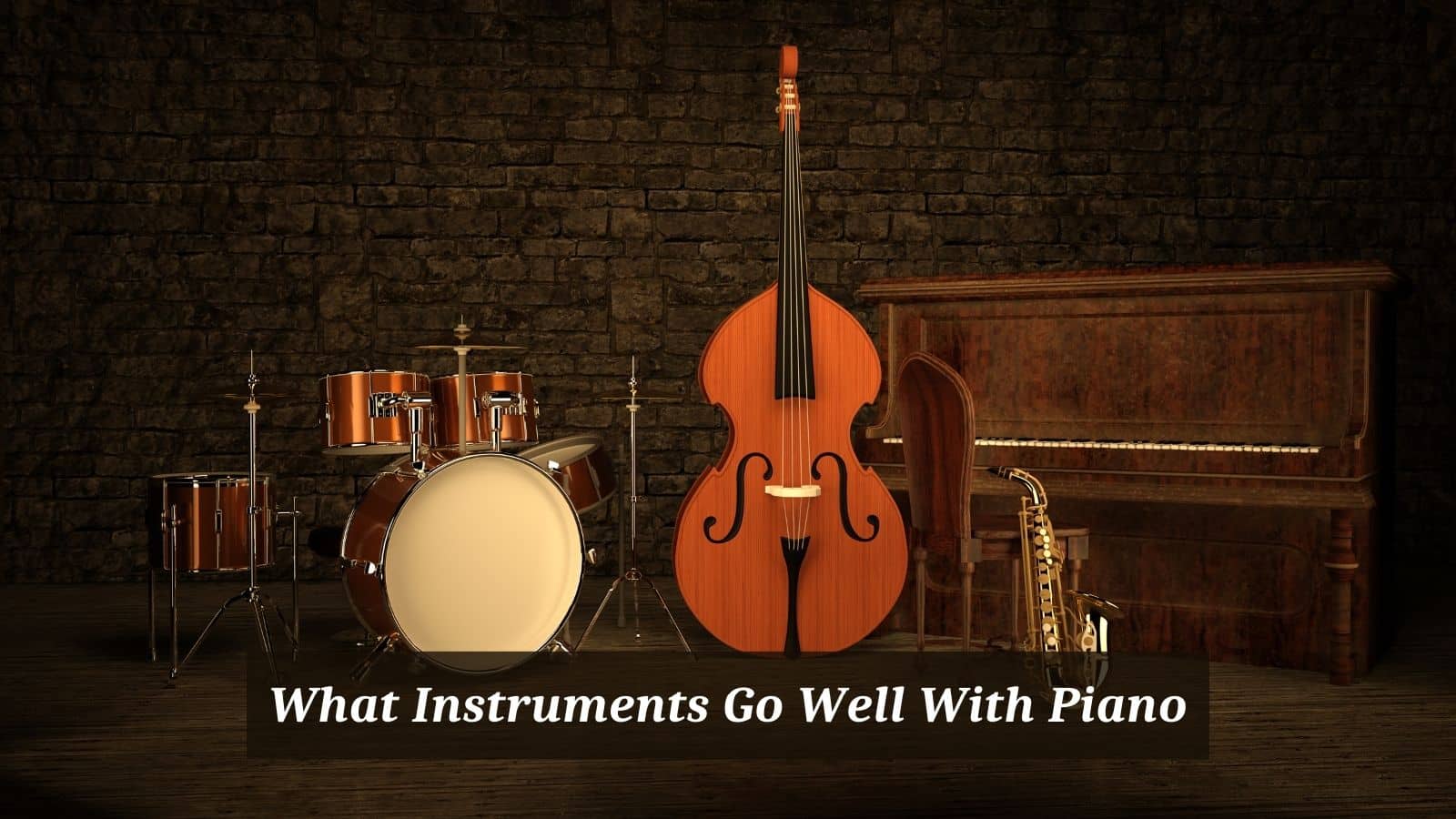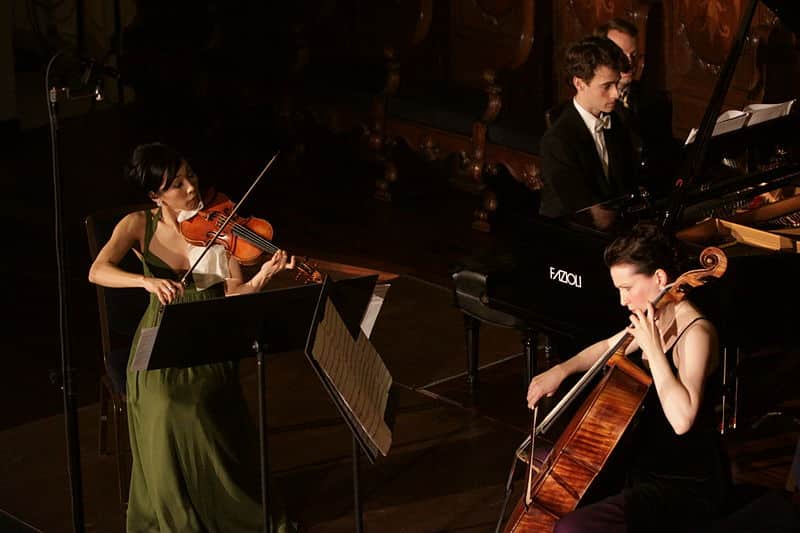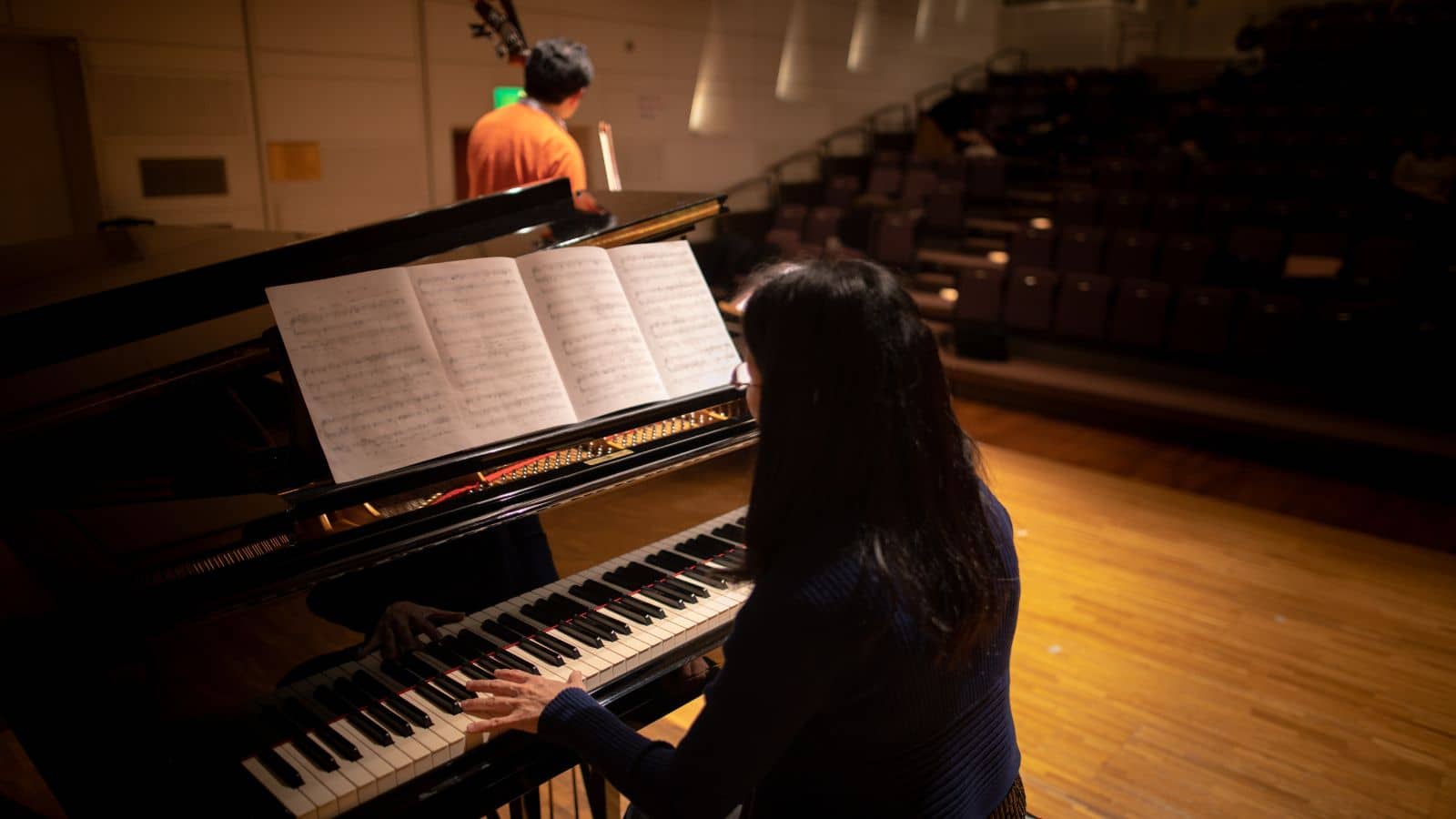
Whenever you are composing for a group of instruments/voices, achieving the desired balance between the different performers can be challenging. Experience in live performance helps with this process.
Consider the well-established selection of ensembles like the string quartet, or string quintet; the piano trio or quartet; and of course that grandest of instrumental gatherings, the orchestra.
Equally, there are vocal trios, quartets and the standard SATB (soprano, alto, tenor, bass) choir. Each of these ensembles has grown from earlier versions to reach a stage where what they provide in terms of sonority pleases the ear.
Homogeneous sounds, for example, an all-string group, or a brass group, will tend to sound good together but that is the tip of a large musical iceberg.
Where things become inspired is when you begin to combine instruments that don’t stem from the same family. I mentioned piano trios and quartets and this may be a solid place to start.
What Instruments Go Well With Piano
The piano trio dates back to the Classical period and was fully explored and developed by leading composers such as WA Mozart and J Haydn. It didn’t exist as an ensemble pre-Classical period as the piano was only gradually coming into its own in the latter part of the 18th century.
The piano trio combines in most cases, a violin, a cello and a piano. Composers use these instruments most simply, to play melodic lines and accompany each other.
Depending on the composer one instrument may dominate more than the others but often interesting writing comes about through the carefully detailed interaction between the instruments. In this setting, the piano sounds perfectly at home with the two-string instruments.
There have been hundreds of instrumental sonatas composed from the Baroque to the present day. A sonata is commonly composed for a solo instrument with a piano.
Sometimes the role the piano plays is relatively slim and accompanimental, in other sonatas the partnership is more equal. There is also, I should mention, the piano sonata, but this is usually composed for a solo piano.
Whether the sonata is for trumpet and piano, bassoon and piano, or violin and piano, the versatility and adaptability of the piano stand out. It can work extremely well with almost any combination in this way.
My preference tends towards woodwind and string sonatas but there are a host of brilliantly written brass sonatas too.
Because of the large range of the piano combined with its immense tonal colouration, it can match, highlight, or fight with the instrument in the sonata.
Some very fine examples of the success of this type of sonata in my opinion would be the Beethoven Violin Sonatas, Brahms Clarinet Sonatas and the Boccherini Cello Sonatas. There are many more examples too numerous to list here.
On a grander scale, the piano becomes the tour de force. Some of the most celebrated works for the piano are its concertos.
Once again, these large-scale works date from the late Classical period most notably with the 21 Concertos for Piano by WA Mozart. The orchestral setting suits the piano well. It can play the protagonist, alongside being a gentle accompanist to the orchestra.
This is because the piano has such power, especially the concert grand of today, it can take on and subdue a full orchestra. The piano’s extensive compass and beautiful sonorities in the hands of a well-practised pianist resonate sublimely with the orchestra.
Different composers handle the piano and orchestra settings in understandably different ways. It is not always centre stage, promoted as the solo instrument. Since the latter part of the 20th Century, the piano frequently finds itself within the orchestra too.
Here the piano’s versatility shows through once more. Composers use the piano to add a unique sonority to the orchestra, perhaps underpinning staccato cello and bass lines, or sparkling with metal percussions like the glockenspiel or vibraphone.
The beauty of the piano is that it can provide an invigorating variety of sounds to the orchestra without becoming a solo instrument. Hungarian composer Bela Bartok viewed the piano as a percussive instrument in the orchestral landscape.
His dramatically compelling work titled Music for Strings Percussion and Celesta (1936) illustrates Bartok’s feeling about one role the piano can ably accomplish.
You’ll notice that the piano isn’t mentioned specifically in the music’s title. This is because Bartok includes it as a percussion instrument. Bartok, as a gifted pianist, naturally used the piano in all its other guises but at the heart of many of his pieces lies the percussive drive of the piano.
I’ve focused primarily on classical music. This is because of the immense scope that this genre of music offers and how well it illustrates the capabilities of the piano with other instruments.
I haven’t mentioned the beautiful way that the piano combines with all voices but a brief listen to any Schubert, Wolf or Schumann Lieder will exemplify that. What I wish to move on to is the piano in a popular music setting.
Just think how many songs are written for solo piano and voice in this genre of music. Primarily it’s because of the sound of the instrument, but also the purposeful accompaniment it can provide.
Across the world of popular music, pianos are used with drums, bass, guitars, organs and brass sections. They can be used for solos as well as accompanimental passages supporting vocals and adding to the overall rhythmic groove of the music.
One of my favourite examples of the piano in popular music is in the songs of Ben Folds.
Folds is an exceptionally talented musician who shot to fame in the nineties with his band Ben Folds Five.
What is unusual about Folds’s approach to the piano is that he uses it in an almost destructively percussive manner. He uses fists or palms to play cluster chords as well as play the instrument from the inside.
In the world of Jazz, we find the piano settling in comfortably with the big bands in the hands of Count Basie and Duke Ellington for example, as well as in smaller more intimate groupings.
Whilst the piano often does add rhythmic elements to the music, it is very much the solo or leader of jazz groups. Listen to the Oscar Peterson Trio for some of the finest examples of virtuosic jazz piano.


